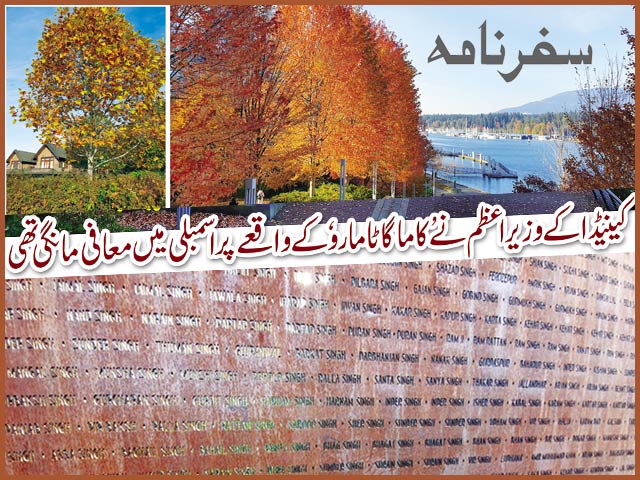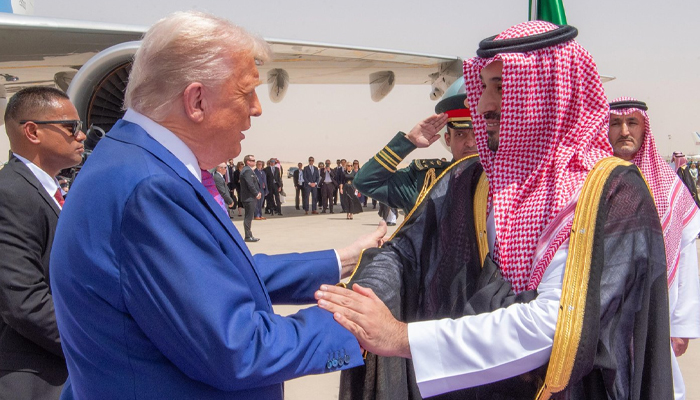The sixth episode
In the summer of 1914 in Canada, the secret of the famous Komagata Maru battle story was revealed. Kuldeep Singh, a wealthy Indian businessman, chartered the Komagata Maru and sailed the cargo ship from Hong Kong to Vancouver.
There were 376 Punjabis on board, of which 340 were Sikhs, more than half of whom were residents of Lahore. They were on their way to Canada where it was hoped they would settle permanently and start a new life. When the Koma Gata Maru arrived in Vancouver, many passengers were stopped on board. They waited for two months and the dispute over entry into the country continued between the Indian community and immigration officials.
The Canadian government had been warned by the British government that gatherings of refugees were being viewed with suspicion in the United States and after the formation of the Ghadar Party in Canada. Despite these efforts, the dispute ended when the Supreme Court rejected all their petitions.
So Koma was forced to return to Gata Maru. He was forcibly sent to Calcutta. On reaching there, the suspicious British authorities realized the intention of the organizers and called the already warned police. As soon as the passengers disembarked from the ship, the police opened fire indiscriminately and killed twenty passengers.
An estimated 8,000 “traitors” returned to India to help the rebellion. However, the British came to know about the plans of the traitors and in 1914 a decree was issued which empowered the provincial governments to arrest those who entered India.
Traitors who arrived on large ships such as the Komagata Maru, the Namsung and the SS Korea were all picked up. Many other Ghadris came through the ports of Colombo, Bombay and Madras. The date of the mutiny was set for February 21, 1913, but at the last minute it was reduced to February 19 because the British found out about their plans.
The authorities acted swiftly and disarmed and imprisoned the Indian soldiers stationed in the cantonments of Kohat, Bannu and Dinapur.
Hundreds of Ghadar Party leaders were arrested and locked up in Lahore Jail. 24 Punjabis were hanged in the first Lahore Conspiracy Trial.
However, after a strong public protest, Viceroy Lord Aherding personally intervened and commuted the sentence of seventeen of them to life imprisonment. Among the seven traitors who were hanged was the zealous revolutionary Kartar Singh Sarabha.
Which belonged to Mochi Door of Lahore. He was hanged in Lahore Central Jail at this place today is Shah Jamal’s big intersection. At least 145 traitors are believed to have been hanged and over 304 traitors were sentenced to more than 14 years in five Lahore conspiracy cases and all died in “black water”. As the Andiman Islands were called at that time.
Let us tell you one thing here that on May 18, 2016, Canadian Prime Minister Justin Trudeau condemned the brutal behavior of the then government in not allowing the passengers of the Kamagata Maru ship to disembark on Canadian soil for two months and send them back to India. Apologized. According to the BBC, he released a statement on his Twitter account which read:
“No words can fully erase the sufferings of Komagata Maru victims. Today, we apologize and recommit to doing better.”
(“No words can fully compensate for the suffering of the victims of the Kamagata Maru. Today we apologize for (the incident) and renew our resolve to do better.”)
He also apologized for the Kamagata Maru incident in the House of Commons and said:
“Today – while knowing that no words can fully erase the pain and suffering experienced by the passengers – I offer a sincere apology on behalf of the government for the laws in force at the time that allowed Canada to be indifferent to the plight of the passengers. of the Komagata Maru,”
“We have learned, and will continue to learn, from the mistakes of our past. We must make sure to never repeat them.”
https://www.bbc.com/news/world-us-canada-36326178
(“Knowing today that no words can fully heal the pain and suffering experienced by travellers, I sincerely apologize on behalf of my government for the laws then in force, which Because of this, Canada treated these passengers differently and made them suffer.
“We have learned from past mistakes and will continue to learn from them.” (so that there is no chance of repeating them again).
When we returned, Barge parked the car on the side of the road and said that there are places of worship of different religions on this road. On one side of the square there was a mosque whose beautiful minaret was visible from a distance and on the other side there was a church building. I asked Barge to take some photos.
After getting out of the car, I ran across the small road inside, then some cars in the distance turned on their off lights and also sounded their horns. I looked around in amazement then took other pictures of the church board. On whose board was this writing.
St. Andrew`s
Newton
PRESBYTERIAN CHURCH
After that, when he started to cross the road once again, the same thing happened. Lights and horn together. Barge and Jitinder were sitting in the car and talking. I thought for a while and then realized that I was crossing the road away from the zebra crossing otherwise it is considered very bad to honk here.
When I asked about the agricultural policy, Barge said that the government makes policies with great understanding regarding agricultural lands.
With regard to the expansion of cities and settlement of new cities, they also take special care of the agricultural area, where no construction work of any kind is allowed. Both British Columbia and Ontario have a strict policy in this regard.
His words made me think about the decaying agriculture of our country. Housing societies were introduced by removing agricultural land from the suburbs of the big and small cities of Punjab. People involved in agriculture try their best to get some road passing near their land so that they can build a housing society there and sell a kanal plot and collect the price per acre.
Jitender asked that while Canada has a good winter, those coming from warmer countries would have to face a lot of difficulties in acclimatization. Barge said that there are still many remote provinces in Canada where the temperature drops to minus 35 to 40 and many such tribes also live there whose population is now only 800 to 3 thousand people.
These tribal people have long been called Reds because of their reddish complexion. For the people living in their own cultural color for centuries, this progress, modernity and people coming from outside were definitely not easily acceptable.
This is why many of their generations became addicted to drugs and still are. Many kinds of scholarships are also being given by the government and along with this, they have been called Native from Red until recently under the principle of social equality and now they are called First Nation.
First Citizen First Citizens and ‘Tai’ In the last century AD things were quite different with the indigenous people here in America and Canada. Then the people who have lived here for thousands of years are being looked at differently in jobs.
The Punjabis from Indian Punjab and especially the Sikh community are actively working with the government to restore their language and cultural heritage. Besides equipping them with modern education and making them suitable citizens in their own areas, their languages are also being maintained. Barges are also contributing to this social process.
I asked Barj again what is meant by ‘Taye Ke’ and his answer was that the Punjabis have named these ancient tribes as ‘Taye Ke’.
“Taye Ke” means the offspring of one’s father’s elder brother. The reason for this is that when some one hundred and twenty to one hundred and forty years ago Punjabis went to Canada, the majority of them were men. In view of the employment and political problems of India, these Punjabis considered this land as their new home. Then the marriages of these people also took place among the old tribal people here. For this reason, their closeness with the other nations settled there is very high.
(function(d, s, id){
var js, fjs = d.getElementsByTagName(s)[0];
if (d.getElementById(id)) {return;}
js = d.createElement(s); js.id = id;
js.src = “//connect.facebook.net/en_US/sdk.js#xfbml=1&version=v2.3&appId=770767426360150”;
fjs.parentNode.insertBefore(js, fjs);
}(document, ‘script’, ‘facebook-jssdk’));
(function(d, s, id) {
var js, fjs = d.getElementsByTagName(s)[0];
if (d.getElementById(id)) return;
js = d.createElement(s); js.id = id;
js.src = “//connect.facebook.net/en_GB/sdk.js#xfbml=1&version=v2.7”;
fjs.parentNode.insertBefore(js, fjs);
}(document, ‘script’, ‘facebook-jssdk’));



